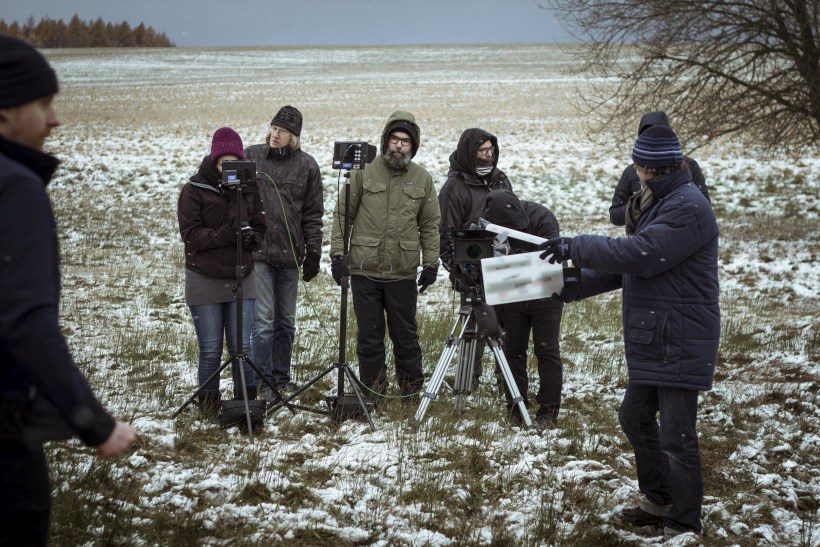
Shooting HAMMERTHAL DREI (Hammerthal Three, Olaf Held, 2019) © Chemnitzer Filmwerkstatt
Little effort is required when gleaning facts from the available databases. We soon discover here that the non-profit Chemnitz Filmworkshop is a media-education institute that “promotes young filmic talent”. Its headquarters and official address is the Clubkino Siegmar cinema, which was entrusted to the association in 1996. But what exactly lies behind these sobering facts and figures, behind these ideas, which is far greater than them and has already been lived out for decades by the out-and-out filmmakers from Chemnitz? It is worth taking a closer look on site, where a complete region is earnestly readying itself to assume the 2025 European Capital of Culture. Let us make it clear from the start: Without the Chemnitz Filmworkshop, this event will not be a success. Without film, the everyday modernity found here would also be lacking somehow.
Located on the eastern edge of the city in an almost rural setting – is how the operators describe the site of the by-now venerable Clubkino Siegmar cinema in the Chemnitz-Siegmar district. The building, which is more than 100 years old, is a piece de resistance for cineastes, whose interest and enthusiasm light up not only for the exciting and exhilarating films screened there, but also for the building’s architecture and cosy atmosphere. In normal years with no viruses lurking around, stable audiences amounting to more than 50,000 visitors attend the two-screen cinema, the highlight of which is its large 180-seat auditorium. With its zeitgeist being affronted by the warmth provided here. Hence, it was only logical that the cinema operations in Zwickauer Straße would be assumed by the Chemnitz Filmworkshop, as a sign of love for their home city.
On walking up the steps, you discover what is termed the “headquarters” – a media facility with production and office spaces, as well as editing suites. Right now, a very young man breezes in, wanting to undertake some practical training. Thus does history progress here. Ralf Glaser, who is 60 by now, takes everything in with a friendly smile. He was already part of it all when its history began here in the 1980s. He and his cousin Lutz Zoglauer.
Driven by pure desire and curiosity, both of them experimented in their youth with Super 8 initially, and then with 16mm cameras. In Horst Viertel, a grandee of Karl-Marx-Stadt (as Chemnitz was called before the fall of the Berlin Wall), they found a knowledgeable mentor with his own private film studio and a “sound re-recording unit”, which was soon joined by an AK-16 camera with film cassettes.
“This was a really big thing,”
as Ralf Glaser recalls. Their interest in exploring the possibilities of the film medium came to the fore especially when the two cousins encountered Claus Löser. Glaser:
“Claus moved in artist circles and knew the musicians in the AG Geige band, as well as lots of painters and writers. But Lutz and I wanted to make films, just films. Gangster films! And thanks to Claus, we did gain an important enrichment in our lives, for sure.”
This included the Filmclub am Theater club, subversive art and an off-culture, to be precise. These activities did then draw the attention of those whose job it was at that time to be attentive to such things. With the details presumably to be found in the trio’s Stasi files…
“Blutiger Abend” was the title of the first short film they made together in 1983, followed by “Nekrolog” two years later. Tarkovsky intermixed with Hitchcock as daring role models with an independent flair. However, it was never an overriding aim of Ralf Glaser und Lutz Zoglauer to study film or any of the related professions at a third-level school or institute. Glaser did once submit a film study application, which was rejected, and he abandoned any further attempts. The desire that counted more then was that of living a community life. The fact that the Chemnitz Filmworkshop happened since then and facilitated their professional careers over circuitous routes was, and still is, a pleasant side effect. Löser would head for Berlin and become a director, film critic, cinema operator, curator and author, while Glaser and Zoglauer remained where they were, and that in Chemnitz. It even felt a bit like Manchester there. Manchester? Maybe, just maybe, the English city did provide the initial spark.
In 1992, when the political situation in Germany had long changed, filmmakers from Manchester came to Chemnitz to shoot a 45-minute 16mm film about unemployment. In the city’s municipal offices, they were considering names for this that people would know. Already one year earlier, the Chemnitz Filmworkshop has been founded as a non-profit association, and thus it was in an unrivalled position to provide support. For the Manchester-Chemnitz project, the result was a joint workshop, for which top-name filmmakers, such as Peter Hartwig and Peter Badel, attended as lecturers. The intention was to stop after this project, but the city administration had also had a lick of film blood by then and realised just how potent it was. The local Youth Welfare Office should now initiate the establishment of a media workshop, equipment would be purchased as though there really were a tomorrow, job creation measures would be launched, because – on a concrete level – this was all about youth work and youth employment that made sense. And indeed, also always about the potential contained in the people and the region. This mix, consisting of social and media-educational work combined with independent filmic art work, would mould and shape the philosophy of the Chemnitz Filmworkshop – and has proven to be a success in each of these three areas to the present day. They were joined by a fourth one, because the association with its know-how and logistics was then also made available for use by professional filmmakers. Like a four-leafed clover. How lucky can you be!
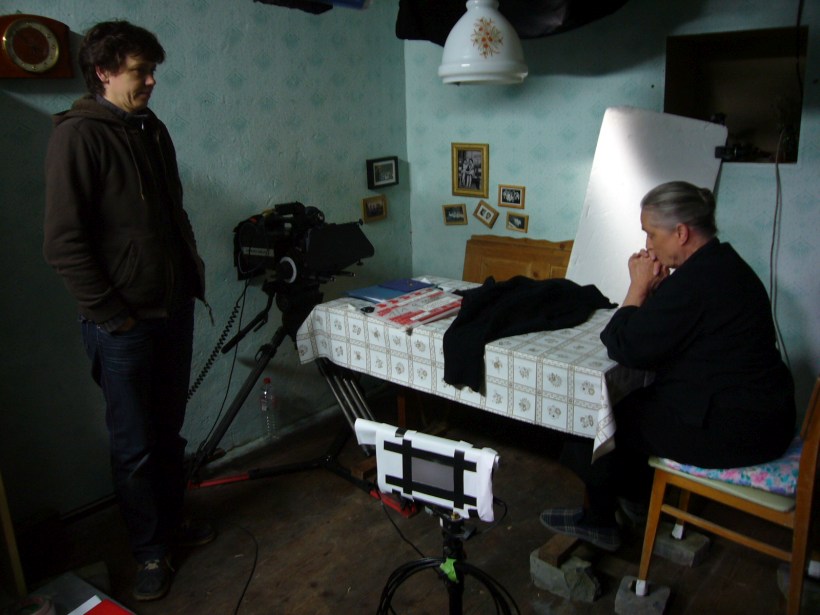
Shooting IM SOMMER SITZEN DIE ALTEN (In Summer they Sit, the Elderly, Beate Kunath, 2009) © Chemnitzer Filmwerkstatt
Soon, further personalities joined the film workshop and have left their mark on it, because they have remained here or returned time and again, and especially, because they have a heartfelt sense of connection with Ralf Glaser and the others here. These include Torsten Neundorf and Erik Wiesbaum in the team, as well as Beate Kunath, Olaf Held and Carsten Gebhardt with many of their own works, to name just five of them. That short film would prove to be the dominant format here can be found in the nature of the genre. “Long films are show-offs” was how the scene once worded it. And in terms of their crafting and stylistic range, shorts also work far better in communal home-cinema settings. What the Chemnitz Filmworkshop “achieved” here in a double sense on the occasion of its 25th anniversary speaks for itself.
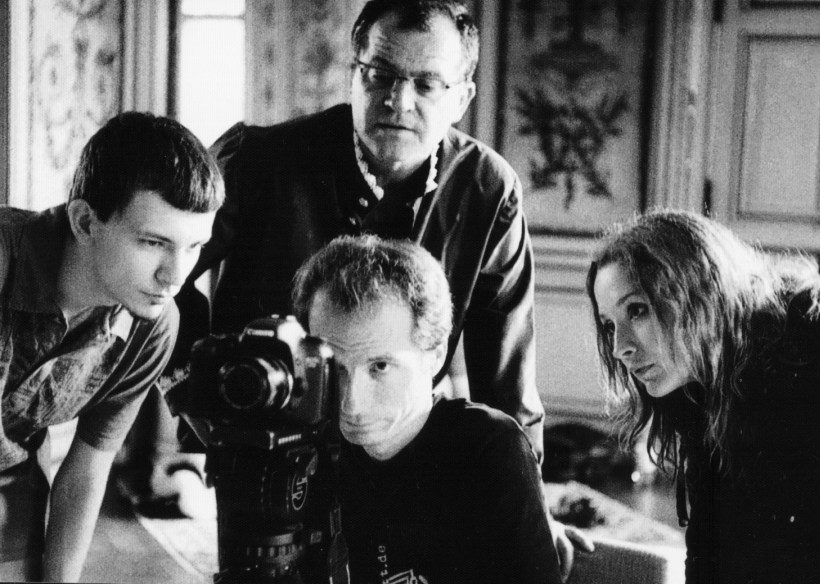
Shooting 20 KARAT FÜR DIE KATZ (Treasure Cat, Erik Wiesbaum, Undine Roßner, 2012) © Chemnitzer Filmwerkstatt
“Retrospektive Edition 25” is the title of the double DVD/Blu-ray that they released. It consists of 27 short films and, if proof were really needed for the workshop’s immense ambition, charismatic freethinking, aesthetic quality and enduring continuity, then here it is. “The Chemnitz Filmworkshop is,” as Katrin Küchler, longstanding co-director of Filmfest Dresden and now the editor of the MDR short film show Unicato, says in the accompanying text, “a creative atoll for film and video enthusiasts, an experimental space (…) with a committed approach and aspiration to let films be created through understanding film.” And it is no vain boast that many of the works selected for the edition have had screenings at international festivals and been listed for awards and prizes.
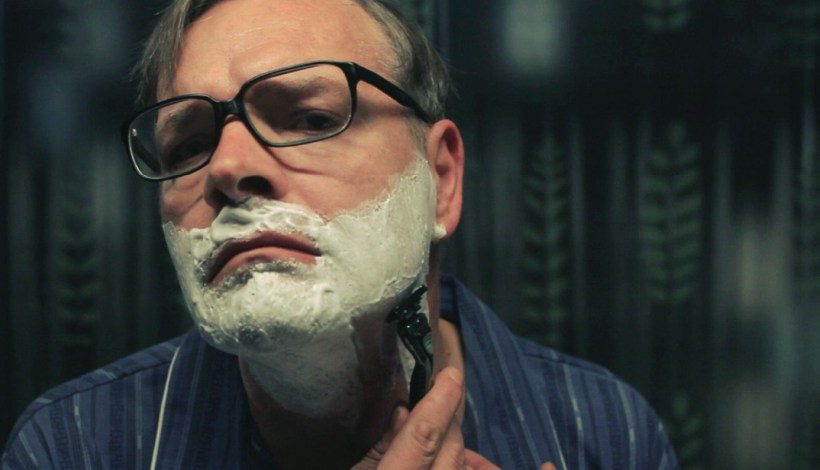
SHORT FILM (Olaf Held, 2013) © Chemnitzer Filmwerkstatt
Horror, drama, thrillers, animation, documentaries and comedy – can all be found here. Olaf Held’s work “Short Film” went on to win the 2013 German Short Film Award. This has remained a highlight to the present day for everyone involved, including the cameramen Zoglauer and Glaser, as well as the director and screenwriter Held. Perhaps also because with it, the Chemnitz Filmworkshop has been able to prevail against the naturally growing dominance of the film schools. Where the output of short films is higher per se.
Olaf Held especially knows what he has in and with the film workshop: Creative spaces and spaces as such, cliques and circles of friends whom “you can speak to and enthuse over and over again”. Together with them he has shot further short films, such as “Duell in Griesbach” (2005) and “Vatertag” (2009), “Daheim” (2011) and “Apollo 11 ½” (2015), as well as of course the homeland cult trilogy of shorts “Hammerthal” (2015 to 2019). His latest short film entitled “Seltsam, Ohio” is currently in post-production.
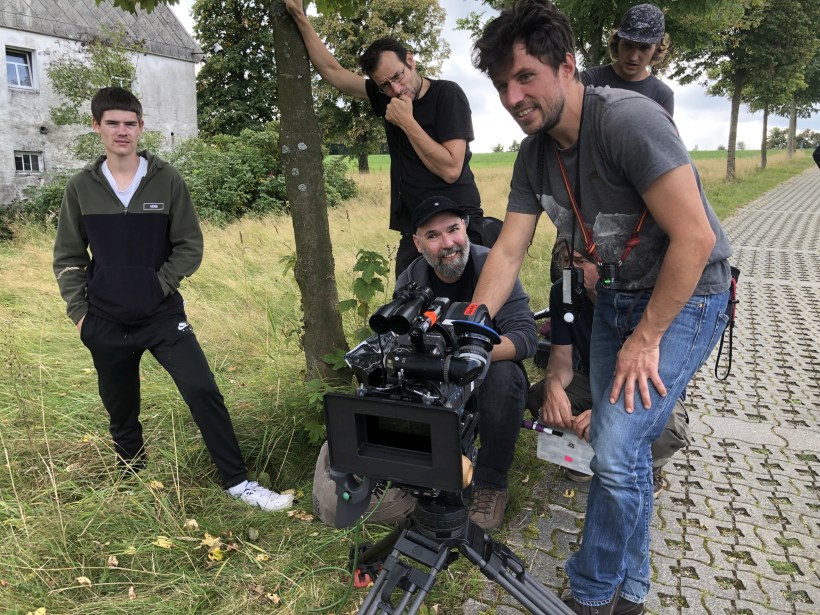
Shooting SELTSAM, OHIO (Olaf Held, 2022 – in post-produktion) © Chemnitzer Filmwerkstatt
The list of names that Ralf Glaser compiled for the research consists of more than two dozen women and men who have passed through the film workshop in more than 30 years and are now earning their keep professionally across all of Germany with film, be that in the editing, sound, production, production-manager and camera departments, or as directors. And these are joined by hundreds of others who have simply wanted to give a sense of purpose to their free time.
Over and again, the Chemnitz Filmworkshop has been regarded as a synonym for creative cells. Which is true for Josefin Kuschela, who literally headed out into the world as a camerawoman. Or for Benjamin Agsten, who is just now finalising the work on his six-minute film entitled “Wiped Out”, which he shot this winter. Beate Kunath recently sent her feature-length documentary “Abschied und Ankunft” about Stefan and Inge Heym off on a tour of Germany. Jan Soldat, who was born in 1984 and is one of the workshop’s most idiosyncratic and courageous filmmakers, attended the 2022 Filmfest Dresden with new work and has been invited to this year’s Cannes Festival, with his latest short “Staging Death” starting in the much-coveted Quinzaine des Réalisateurs section. Klaus-Gregor Eichhorn, the creator of short films such as “Stimmen” and “Die Prüfung”, as well as being the director and screenwriter of two long films (“Drei Patienten” and “Splitter”), gains new filmic inspirations here time and again, although he has been an anaesthesiologist since 2017. When he first came to the film workshop, he was just twelve years old.
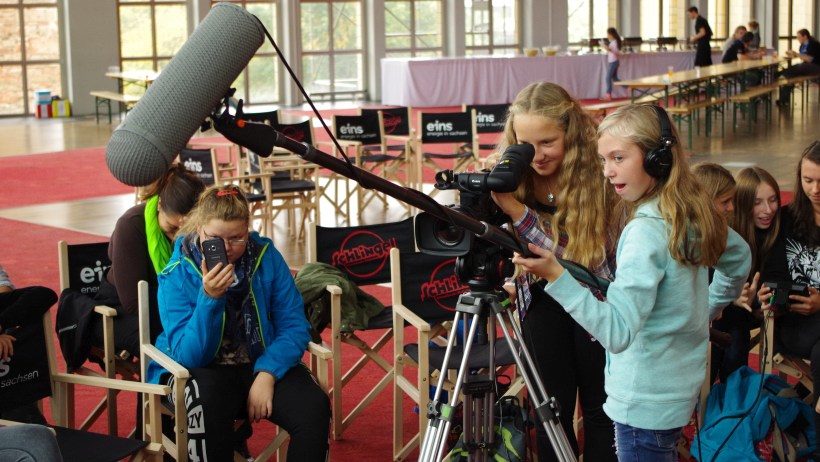
Workshop for children and teenagers © Chemnitzer Filmwerkstatt
Currently, five completed films are awaiting their premieres: “Phoebe” (Kai Junge), “Minuten” (Carl Lehmann), “Karl” (David N. Koch), “Vakuum” (Jonas Erler) and “Open Doors” (Becky Hellwig/Eden Nafres). And a further six works are about to be finalised. The Chemnitz Filmworkshop can certainly claim to have achieved a flow. Gaps or breaches are not to be found anywhere, as though there is a self-generating process in motion here, and young people especially are also still able to clearly appreciate what is available to them in the Chemnitz-Siegmar media facility. Torsten Neundorf puts it like this: “Whenever they screen their completed films, you get media professionals who can barely believe that everything here is made and crafted by the young people themselves. There’s no better compliment than that. I believe we’ve always been very good at not influencing the young people, and just given them the support they needed. They could always speak to us, approach us. And we are product oriented, it’s not just about having fun here. A film does have to result from it all.”
In recognition of its outstanding youth work, in 2021 the Chemnitz Filmworkshop received the “DEFA Foundation Prize for Young Cinema”, as well as the Media Education Award of the Saxon State Media Authority for the four-part short video series “Die NSU im Heckert-Gebiet”, as a project for young people between 16 and 26 years old.
A community of filmic friendships – if the Chemnitz Filmworkshop had not given itself this title, then it would have been accorded it. The doors there are always open and the camera lenses to the ready.